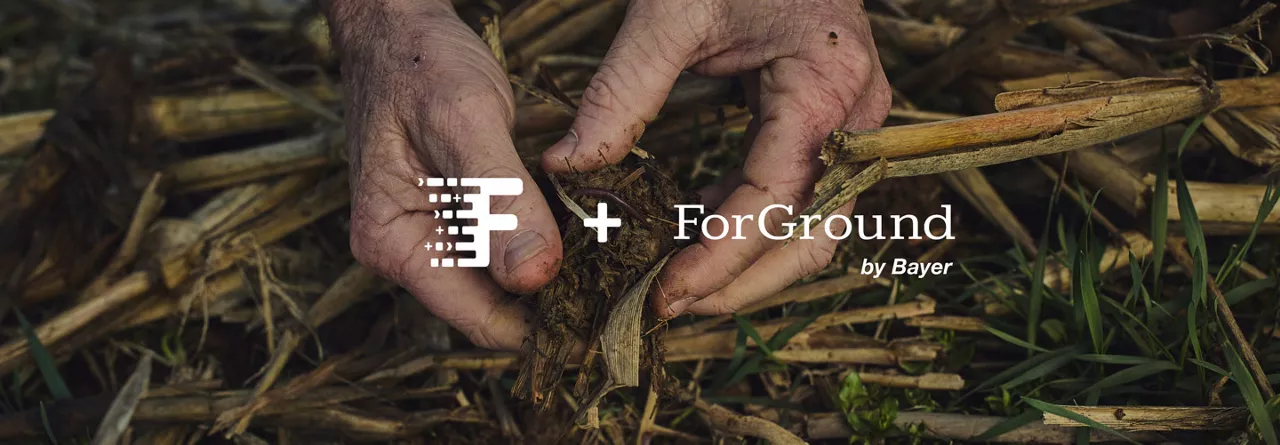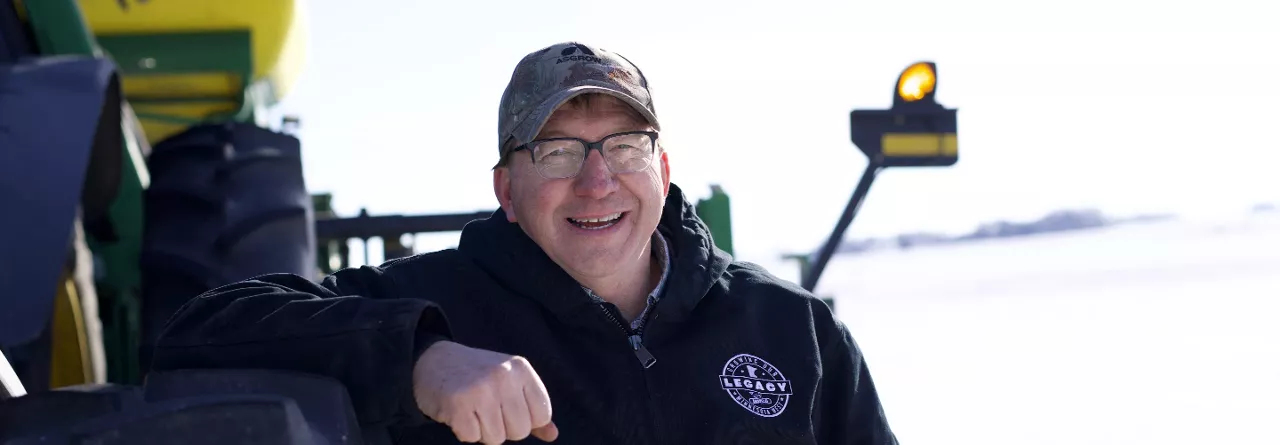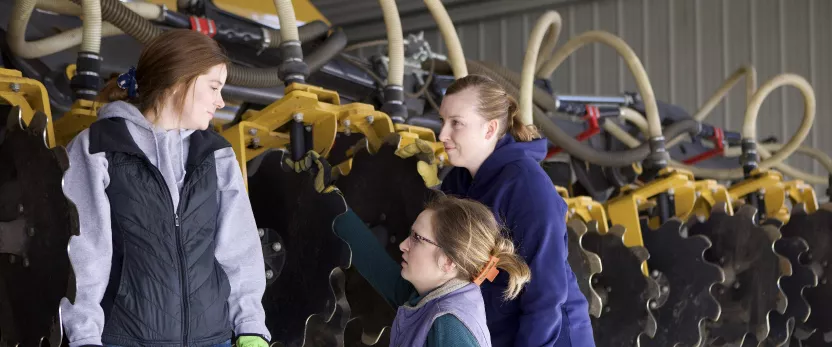
The Offseason Advantage: Finding Profits Post-Harvest with FieldView and ForGround
Here’s a look at how FieldView and ForGround by Bayer work hand-in-hand to help growers tap into potential revenue streams from carbon farming.
Hear Harmon's journey into regenerative agriculture.

Growing up on a farm near Kerkhoven, Minnesota, a beautiful field was a field of pure black soil next to the bright green corn stalks. But today, as an agronomist and a farmer, my perspective has started to change as I’ve learned more about soil health and potential practice changes that can have lasting benefits for our family’s farm.
When it came to reduced tillage on our acres, we approached it like any other change on our farm: with a test-and-learn mindset. This regenerative journey has been just that – a journey – and I’d suggest that farmers interested in adopting some of these practices consider it as a journey over seasons.
Harmon and his family are currently being featured in Season 3 of the YouTube documentary series “A Farmer’s Journey”. You can watch Part 1 here.
We have such short planting and harvest windows here in Minnesota that many people feel like things such as cover crops and strip tilling either aren’t worth it, or aren’t possible. But we started to wonder: what if we could make it work? With the right approaches and motivation, I think practices that can enrich the soil and help our acres get more resilient are achievable for even us in the northern states.
For H&G Farms, it all started with a sense of curiosity. Myself, my wife, and our three daughters are all naturally curious people, so we decided to give it a try. We decided to ease into things, so we developed a 3 to 5 year plan to introduce our farm to strip tilling. In our first year we had three strip till fields, following soybeans and going into corn. We had two comparisons of conventional versus strip tillage to see if we got the same yields. The next year, we were able to do soybeans going into corn stalks, and the year after that we introduced sugar beets and corn-on-corn.

Harmon and his daughter, Katie, meet with an agronomist from ForGround by Bayer to discuss cover crop strategies.
Three years later, we’re now working on getting better in all of these practices. Our curiosity propelled us into this, but now what we’ve learned is what keeps us motivated. I couldn’t do this without the talents of each of my daughters, too. We’re able to look back at how far we’ve come and tangibly see the growth that’s happened because of our hard work and dedication. Ideally, we’d like to move into having more corn-on-corn strip till fields, as well as sugar beets. We’re also starting our journey with cover crops, with this year being our first year. We’ll be taking our time and making sure we’re doing it right, just like with our conservation tillage journey. We’ve also recently signed up for ForGround by Bayer, a program that provides agronomic resources and rewards farmers for adopting and implementing conservation tillage and cover crops.
What about the future? What keeps us moving forward? Motivation isn’t always easy to come by, and there’s one thing we have that keeps us looking ahead: each other. When we take care of our soil, it takes care of us. Because of the care we’re putting into it now, we know our land will be there for our daughters and our grandkids. To me, it’s just a part of taking care of my family and leaving behind a legacy that lasts.
Most of the time, farming is fun and all-around great. But there are times when it is challenging, especially when trying new things. It’s in those times that we’ve been tested the most and have learned the most. You must continue to have the heart and curiosity for what you’re doing.
Now, a beautiful field to me is one with the corn coming up in strips, full of residue between the rows, where I know it’s supporting stronger soils. I’ve found that my family and I can enjoy beauty so much more when we know it’s going to be around for a good long while.
Because of the care we’re putting into it now, we know our land will be there for our daughters and our grandkids. To me, it’s just a part of taking care of my family and leaving behind a legacy that lasts.

Harmon and his daughter, Katie, meet with an agronomist from ForGround by Bayer to discuss cover crop strategies.
To learn more about ForGround by Bayer and start your journey toward conservation practices that can pay, visit BayerForGround.com/Farmers.